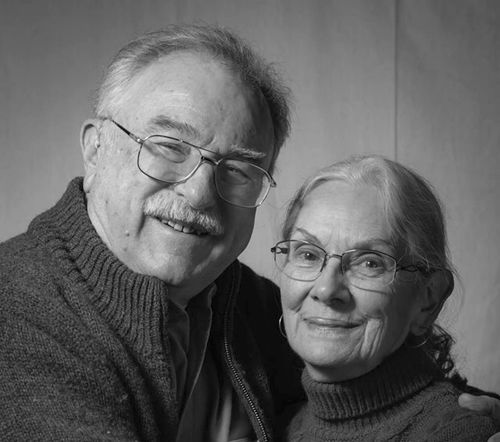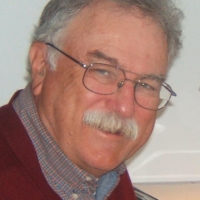
I have been a delegate to every national convention of the Communist Party USA since I joined in 1958. My first was the 18th Convention at Webster Hall on the Lower East Side of Manhattan in 1967. It opened with a mass rally. I was one of about a dozen youth asked to sit on the stage, proof that the Party, hounded by the FBI, its leaders imprisoned for years, was on the comeback trail. My parents came down from New Hampshire to attend the rally in the jam-packed hall.
Yet even more memorable for me personally was the 19th Convention in Brooklyn in the spring of 1969. There is a story behind that convention that explains why it meant so much to me.
Joyce and I were living in Arlington, Virginia with our three children. The Daily World editors asked me on short notice to travel down to Charleston, South Carolina, to cover a rally by Hospital Workers Local 1199, who had been on strike for months fighting to win union recognition and decent wages and living conditions. Dr. Martin Luther King Jr. had been assassinated a few months earlier but the Southern Christian Leadership Conference was a full partner in that strike battle. Dr. Ralph David Abernathy, King’s successor, was in Charleston helping mobilize support for the strikers.
I took the train down to Charleston arriving at about midnight, checking into a cheap hotel. Next morning I walked to the church where the rally would be held that evening. The Governor had declared a state of emergency, ordered a curfew and mobilized 500 National Guardsmen who were patrolling Charleston, brandishing rifles with fixed bayonets. It was as if the City were under siege.
I learned that the rally site, an African Methodist Episcopal Church was hallowed ground: Denmark Vesey, who founded the church, had met with his comrades to carry out a slave revolt in 1822. He and his brethren were tried and executed.
The church that evening was packed with the strikers, mostly African American women. The rally combined the passion and joy of a Black church service and the militant, fighting spirit of a union rally. The crowd lifted the roof with their singing.
Abernathy and Dr. King’s widow, Corretta Scott King, and King’s son were there to help fire up the crowd.
I remember strike leader, Mary Moultrie. She was a gentle, soft-spoken person, salt of the earth, not at all a fiery orator. Yet her words stirred the crowd to strong applause.
I had my story. I traveled home. I wrote up the story and a day later took the train up to attend the CPUSA 19th National Convention at the St. George Hotel in Brooklyn. Daily World co-editors, Carl Winter and John Pittmann, greeted me warmly. Carl leaned close and said in my ear, “You must speak to the convention about the rally in Charleston.”
At that time, some in the Party were arguing that we were too conservative and should embrace the Maoist slogan that “All power springs from the barrel of a gun.” They were under the influence of ultra-leftists who were driven into a blind fury by the repression orchestrated by J. Edgar Hoover and the rightwing ruling class. These racists were so blood-thirsty they would assassinate Dr. King and Malcolm X to smash the movement.
One speaker delivered a sharp speech calling on the Party to align itself with the Black Panther Party and their strategy of confrontation with the FBI, not to shrink, even, from armed confrontation with the enemy.
Lee Cain, African American auto worker from Detroit took the floor and answered. He had toiled for years at the Dodge Main plant and was a leader of the Black Caucus of the United Auto Workers. A stooped, thin, dark-complexioned man, he wore spectacles and spoke in a high-pitched voice. He was a powerful orator.
Cain spoke of the suicidal error of embracing ultra-left adventurism. Many working class people, African Americans included, keep a loaded firearm hidden in their closet to defend themselves, Cain said. They don’t deliver loud speeches about it. What is needed to defend the Black community from FBI terrorism and police repression is a broad-based, non-violent, mass movement that embraces organized labor, the organizations of the African American people including the NAACP and the SCLC. We must never allow ourselves to be diverted down the narrow path of ultra-leftism, a sure recipe that plays into the hands of the enemy, he said.
The crowd stood applauding, cheering. It was the high point of that convention, the defense of a mass line by a rank and file auto worker and a decisive rejection of adventurist strategy and tactics.
I don’t remember just when, but at some point I was called on to give my five minute speech. I spoke about Charleston, the struggle of the Black women hospital workers to organize a union in the City where the first shot of the Civil War was fired. Open shop Charleston, still segregated, still saturated with white supremacy. I was stunned by the strong ovation my speech received.
When it came time to elect the in-coming National Committee, I was not on the list of those recommended by the Presiding Committee. But someone from the floor nominated me. And when the votes were counted, I had been elected to the National Committee of the Communist Party.
On the long train ride home, I thought back over that convention, the many eloquent speeches given by comrades in so many areas of intense struggle. That convention more than any other taught me the crucial importance of developing a correct Party line to guide our work, of having the courage to stand up and defend that line. Monopoly capitalism knows full well the danger to their profit interests of a strong united Party deeply immersed in the mass movements. Their aim is to weaken and isolate the Party and destroy those mass movements. No one understood this more clearly than Lee Cain. He kept his “eyes on the prize.”
Photo: Tim and Joyce Wheeler/PW










